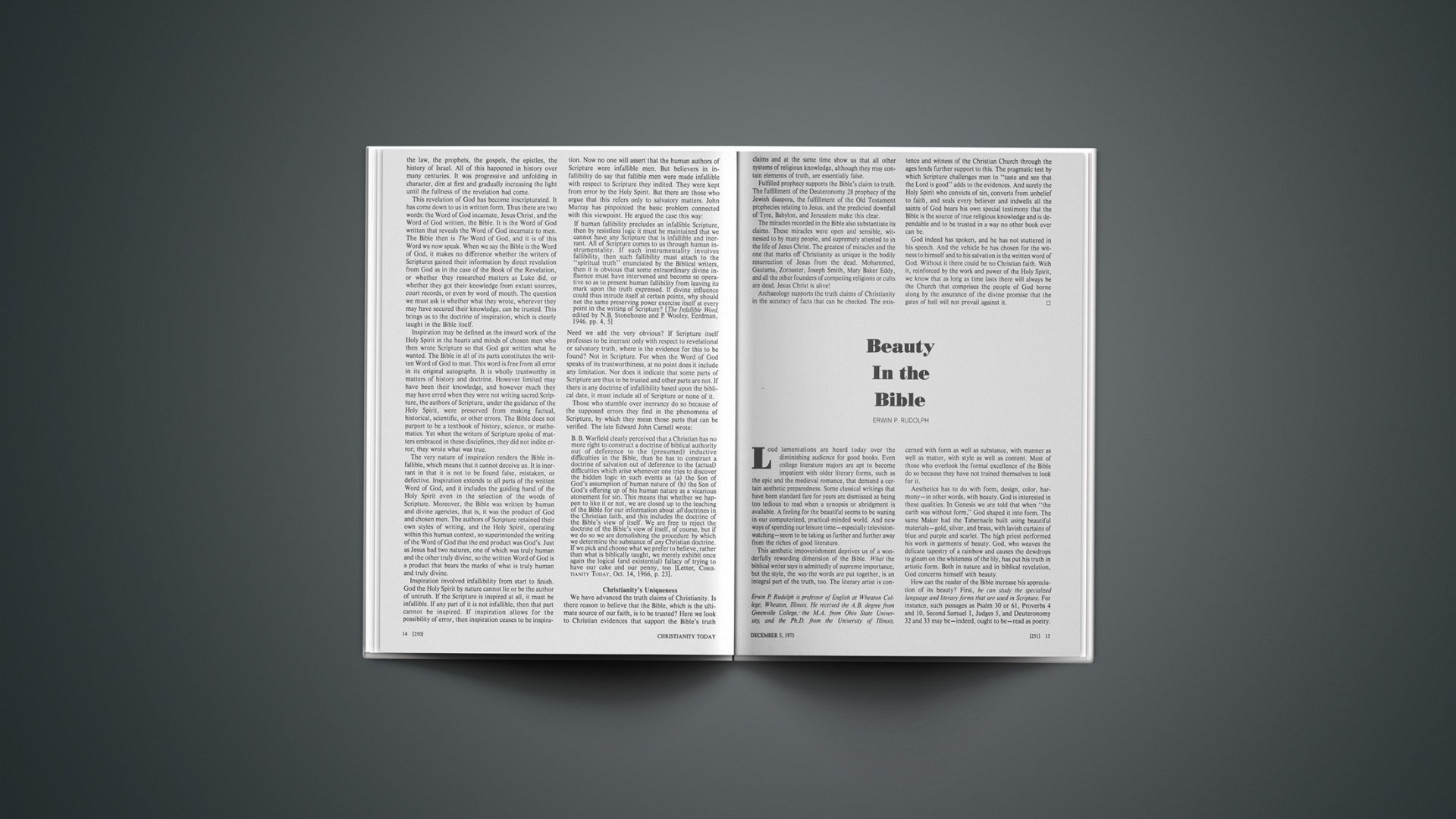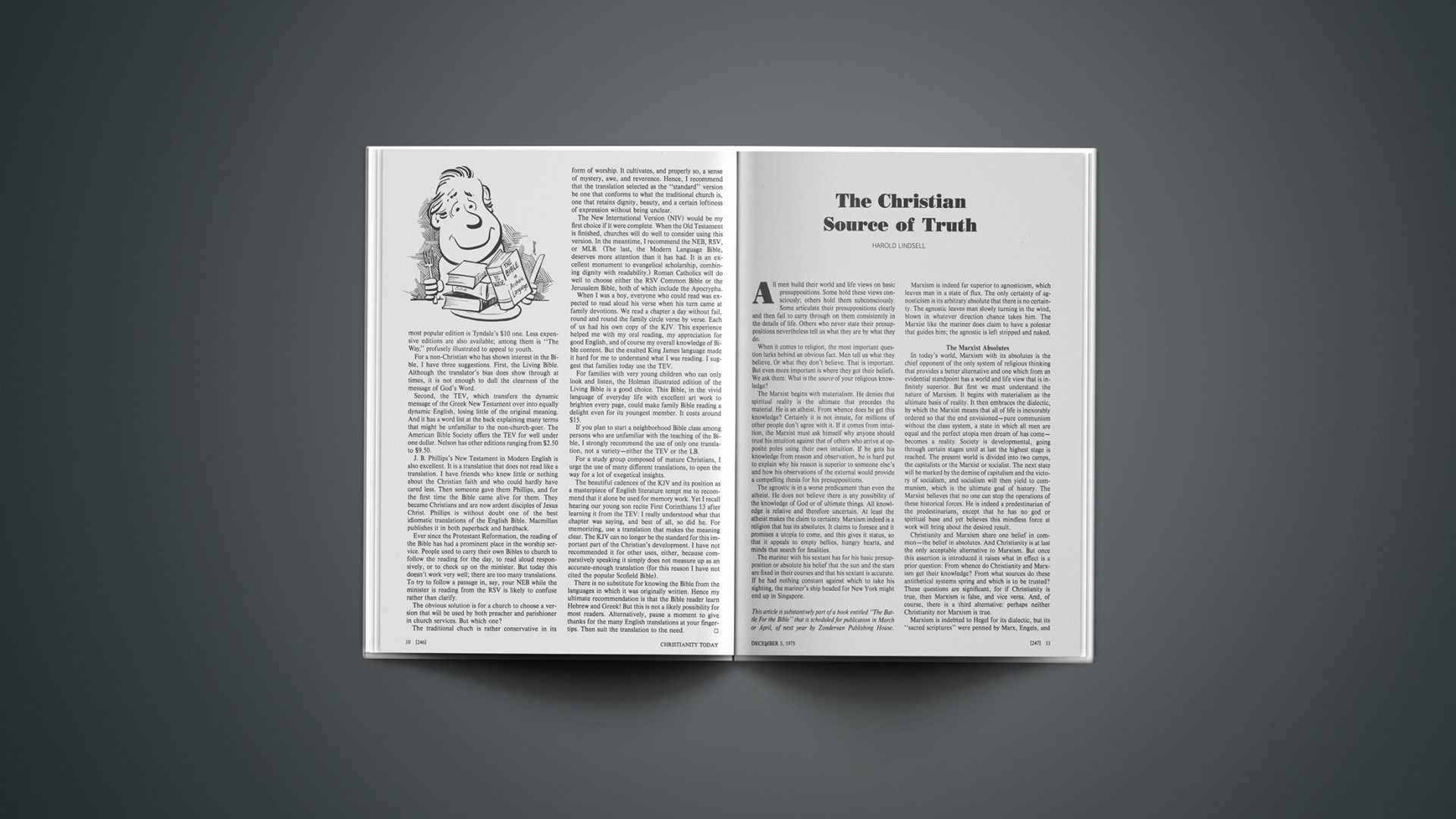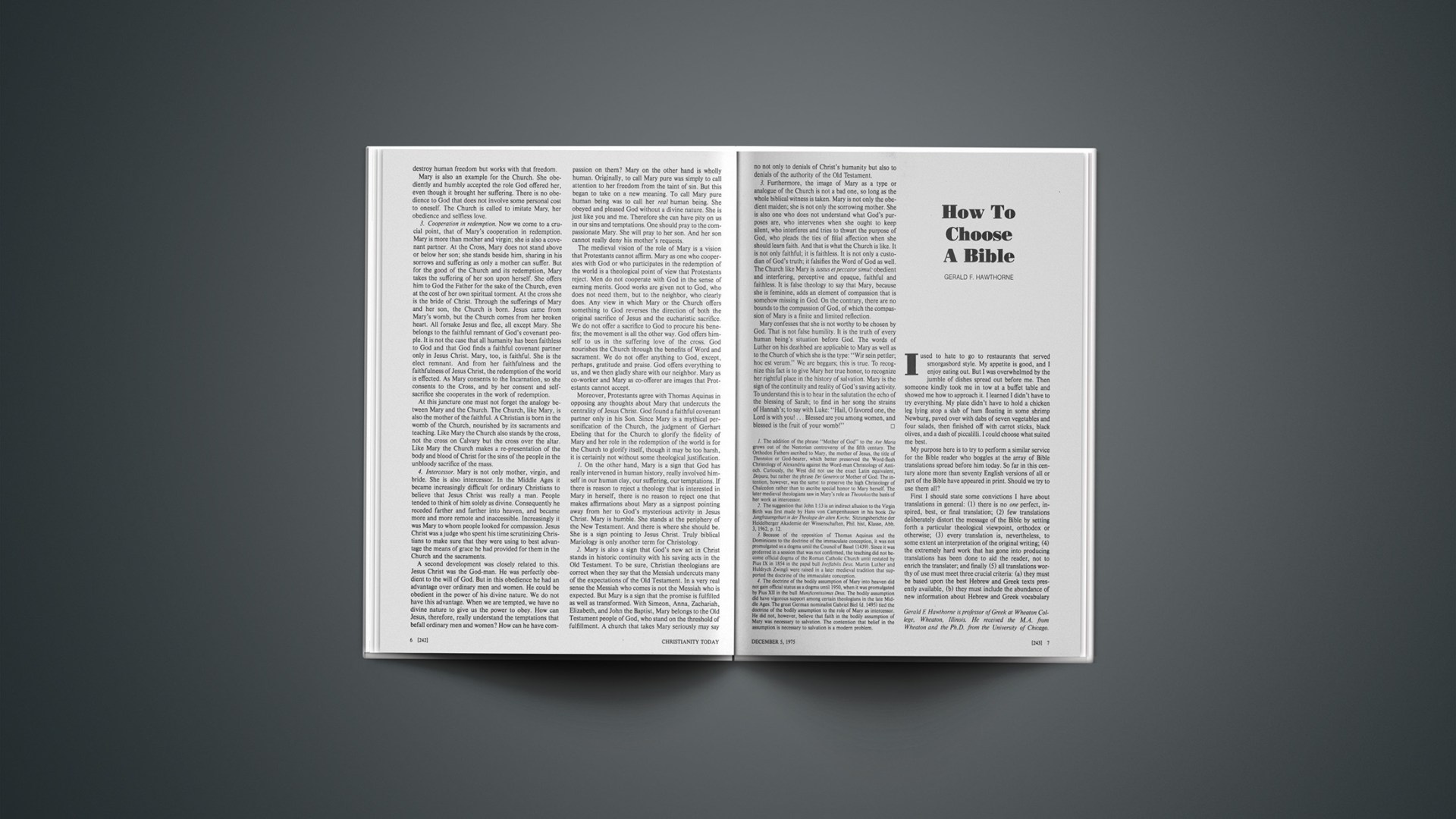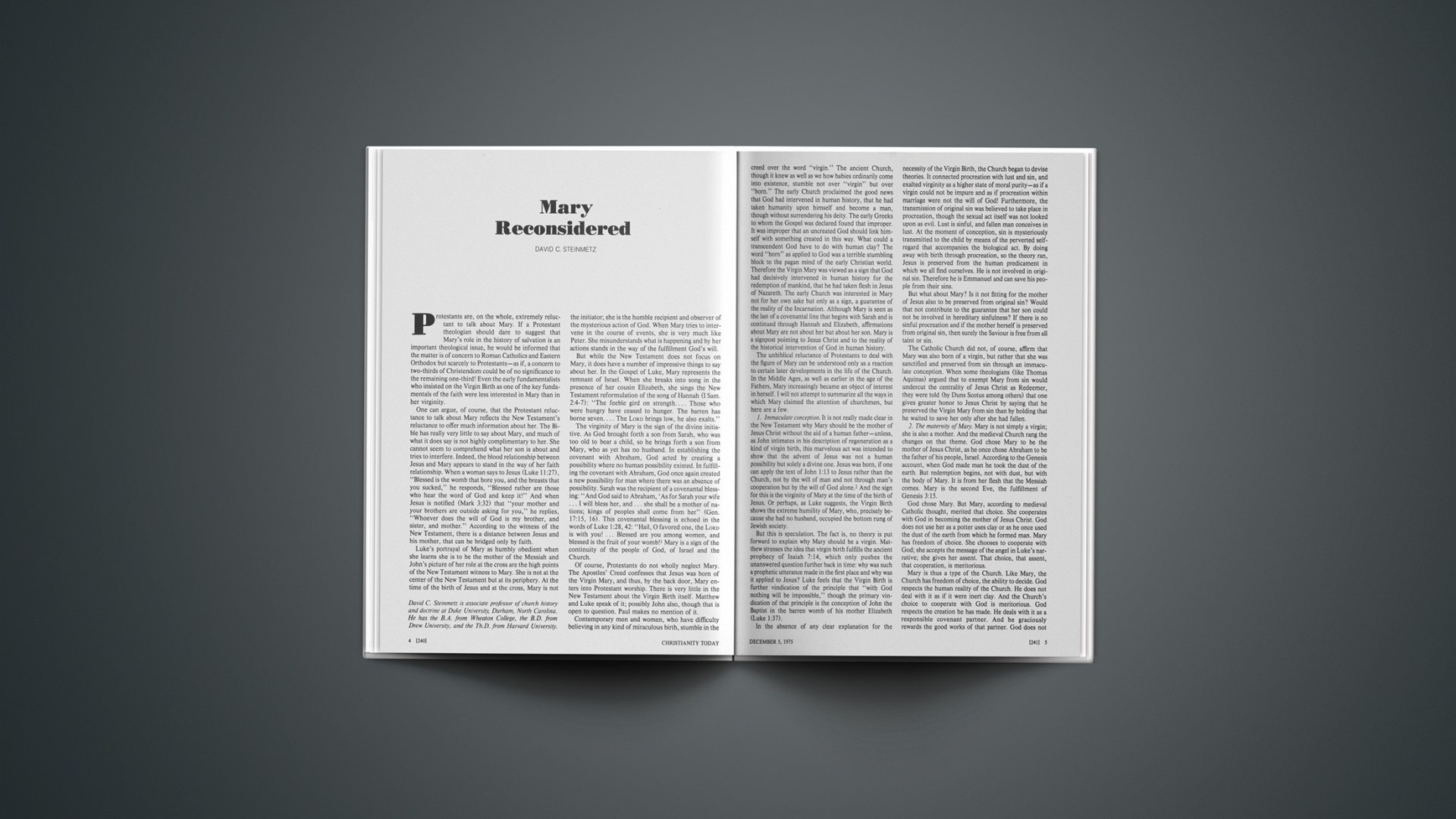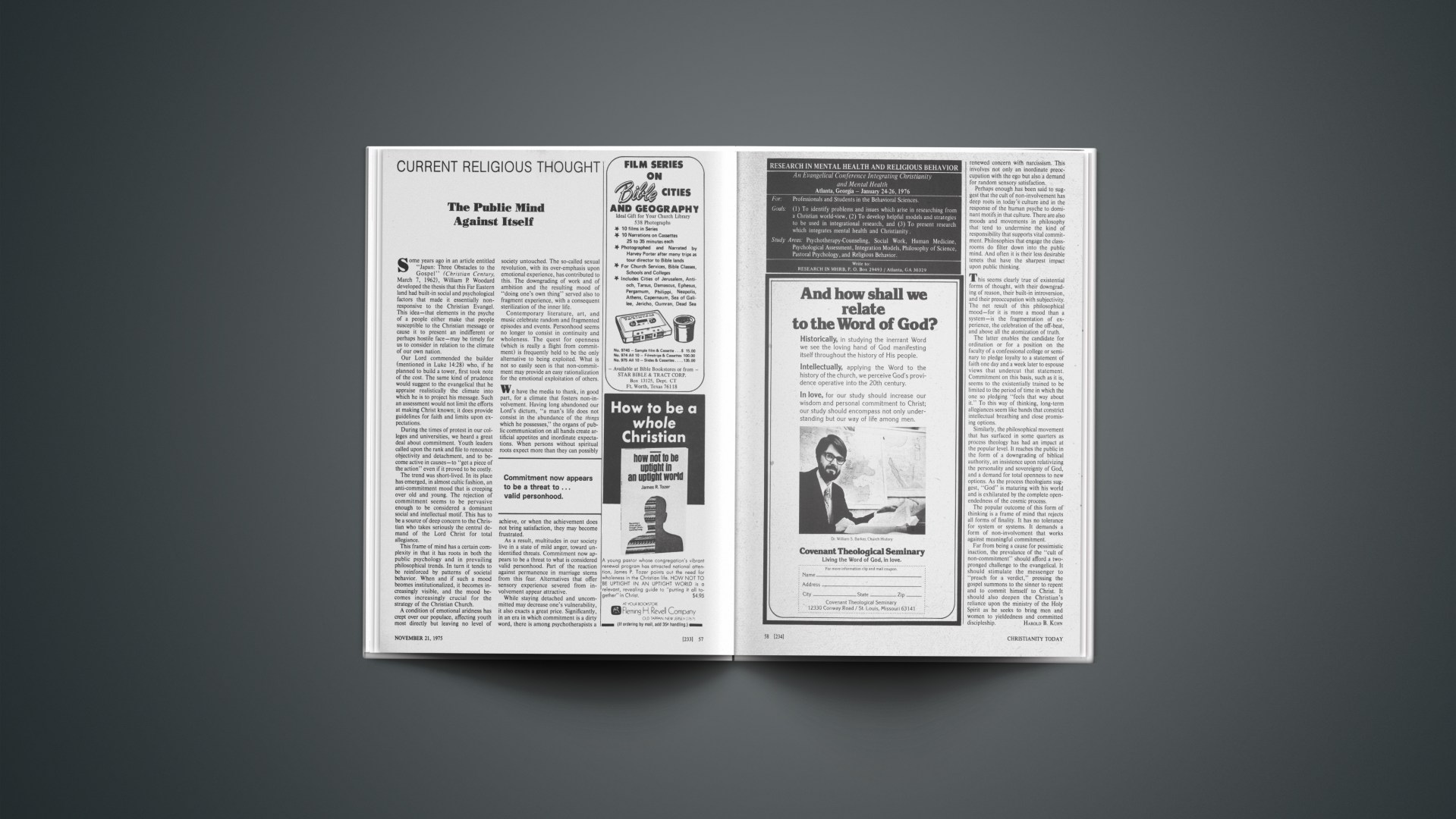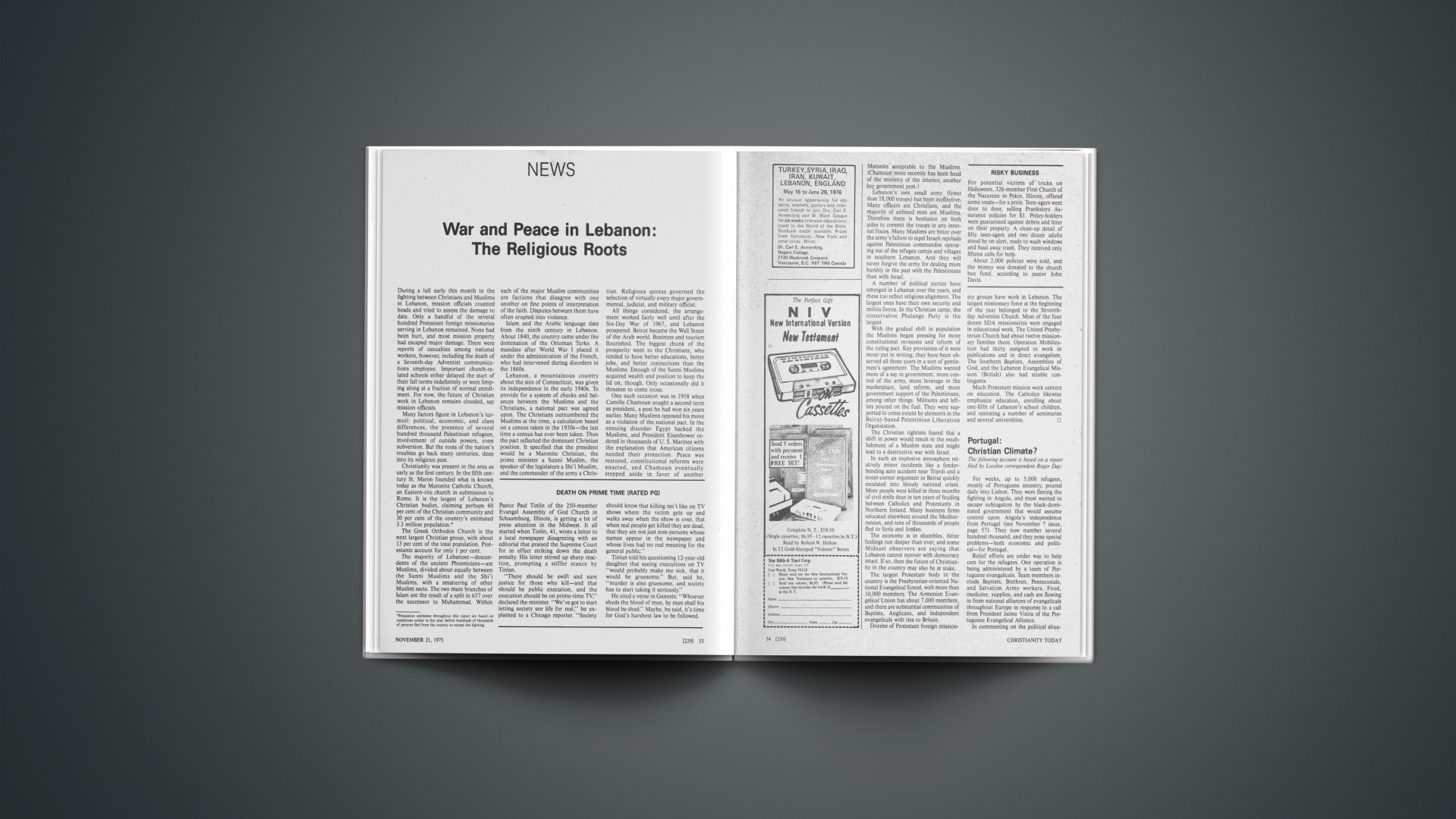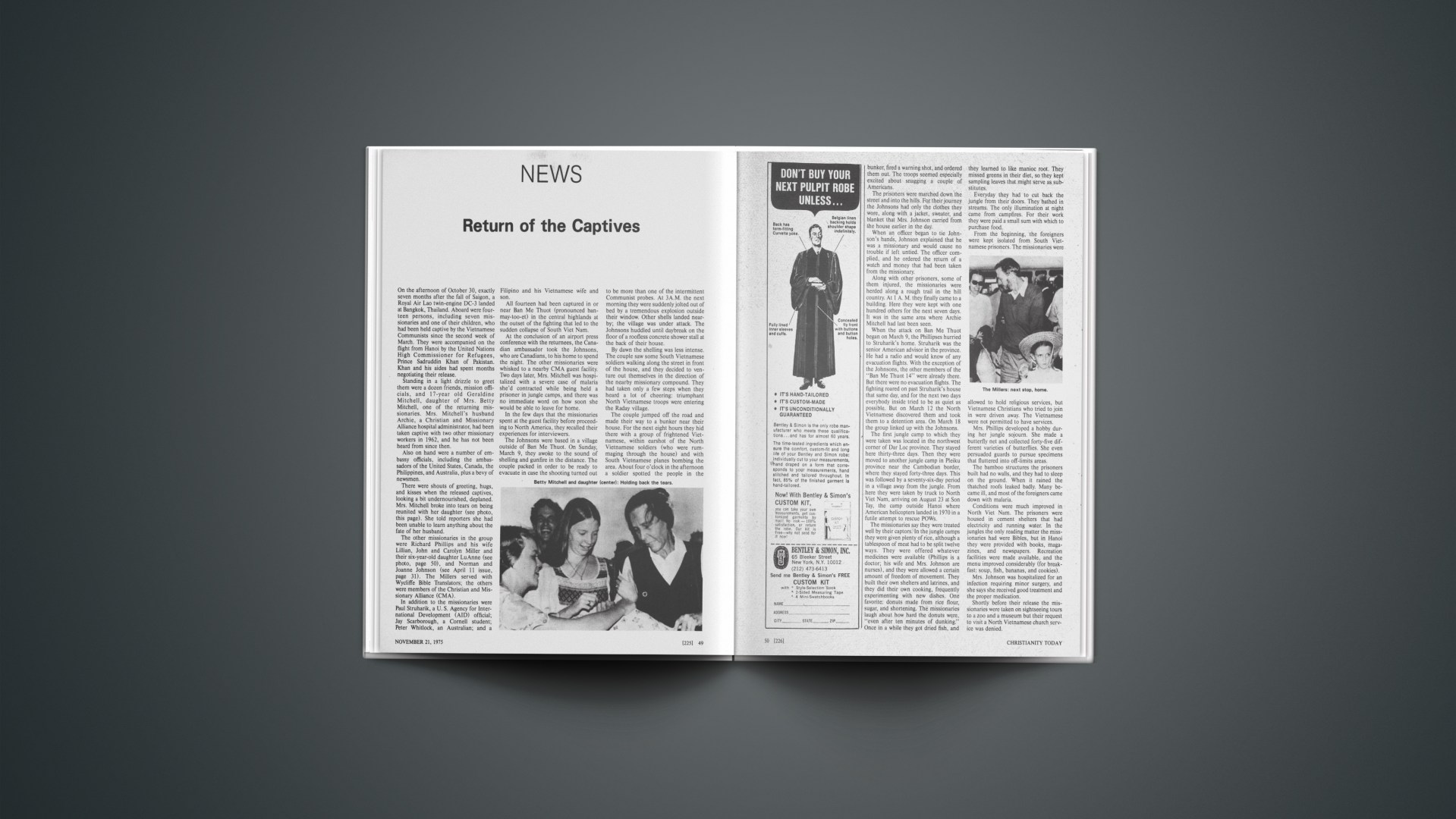Loud lamentations are heard today over the diminishing audience for good books. Even college literature majors are apt to become impatient with older literary forms, such as the epic and the medieval romance, that demand a certain aesthetic preparedness. Some classical writings that have been standard fare for years are dismissed as being too tedious to read when a synopsis or abridgment is available. A feeling for the beautiful seems to be waning in our computerized, practical-minded world. And new ways of spending our leisure time—especially television-watching—seem to be taking us further and further away from the riches of good literature.
This aesthetic impoverishment deprives us of a wonderfully rewarding dimension of the Bible. What the biblical writer says is admittedly of supreme importance, but the style, the way the words are put together, is an integral part of the truth, too. The literary artist is concerned with form as well as substance, with manner as well as matter, with style as well as content. Most of those who overlook the formal excellence of the Bible do so because they have not trained themselves to look for it.
Aesthetics has to do with form, design, color, harmony—in other words, with beauty. God is interested in these qualities. In Genesis we are told that when “the earth was without form,” God shaped it into form. The same Maker had the Tabernacle built using beautiful materials—gold, silver, and brass, with lavish curtains of blue and purple and scarlet. The high priest performed his work in garments of beauty. God, who weaves the delicate tapestry of a rainbow and causes the dewdrops to gleam on the whiteness of the lily, has put his truth in artistic form. Both in nature and in biblical revelation, God concerns himself with beauty.
How can the reader of the Bible increase his appreciation of its beauty? First, he can study the specialized language and literary forms that are used in Scripture. For instance, such passages as Psalm 30 or 61; Proverbs 4 and 10; Second Samuel 1; Judges 5, and Deuteronomy 32 and 33 may be—indeed, ought to be—read as poetry. The person whose ear is deaf to the beauties of poetry will fall short in understanding and appreciating sections of the Bible designed to be read that way. Familiarity with literary forms prepares one for intelligent, rewarding Bible reading. (For more on this, see such books as Richard Moulton’s The Literary Study of the Bible and Leland Ryken’s The Literature of the Bible, and also Ryken’s article in the January 17, 1975, issue of CHRISTIANITY TODAY, “Good Reading in the Good Book.”)
The Hebrew language, like Anglo-Saxon, is full of figures; for instance, “Till the day declined” for “until afternoon” (Judges 19:8). In Genesis 37:36 the literal meaning of what is rendered “captain of the guard” is “the chief of slaughter men.” Other picturesque terms are “treaders down” for “oppressors,” “fields of desire” for “pleasant fields,” “with one shoulder” for “one consent.” Still others are “the fat of the land,” “the valley of the shadow of death,” “the end of all flesh,” “a soft answer,” “son of perdition.”
A poet commonly describes through images. To convey to us the feeling of a calm, beautiful evening, Wordsworth says, “The holy time is quiet as a nun/ Breathless with adoration.…” Robert Bridges in “The Storm Is Over” says, “The broad cloud-driving moon in the clear sky/Lifts o’er the firs her shining shield.” W.B. Yeats speaks of an old man as “a paltry thing/ A tattered coat upon a stick.” We find a lot of this in Scripture. For instance, in the context of joy, the floods and the trees are said to “clap their hands,” and the hills to “break forth … into singing” (Ps. 98:8; Isa. 55:12). “The desert shall rejoice and blossom as the rose” (Isa. 35:1). Jesus invokes us to “take my yoke … and ye shall find rest” (Matt. 11:29).
One of the most beautiful sections among the Minor Prophets is the third chapter of Habakuk. Chapters one and two were written at a time of national crisis when the land was threatened by barbaric hordes from the north. The prophet, though perplexed by God’s dealings, kept alive his trust and hope. At last he looks at God from the vantage point of the high place and declares his unbounded confidence in lines like these:
Although the fig tree shall not blossom, neither shall fruit be in the vines; the labor of the olive shall fail, and the fields shall yield no meat; the flock shall be cut off from the fold, and there shall be no heard in the stalls; yet I will rejoice in the LORD, I will joy in the God of my salvation. The LORD God is my strength, and he will make my feet like hinds’ feet and he will make me walk upon mine high places. To the chief singer on my stringed instruments [Hab. 3:17–19].
The artist calls our attention to beauty and truth in the world that might otherwise elude us. This leads us to consider a second corrective for artistic deficiency: we ought to open our eyes and ears to what God has to say through those who have special insight. John Ruskin once remarked that he never really saw the blue of the sky until he looked at one of Turner’s paintings. When we stand with Wordsworth at Westminster Bridge and see with him the city that “now doth like a garment wear/ The beauty of the morning … /All bright and glittering in the smokeless air,” or when we behold Henry Vaughan’s celestial world as he says, “I saw eternity the other night/Like a great ring of pure and endless light,” we are enabled to perceive through sensitive eyes, imaginative eyes, beauty-loving eyes, a moment’s monument to truth and beauty.
The Psalmist must have felt the need for this awareness when he prayed, “Open thou mine eyes, that I may behold wondrous things out of thy law” (Ps. 119:18). Sometimes our eyes do not see, our ears do not hear, both aesthetically and spiritually. John the Apostle realized this when he said, and repeated six times, “He that hath an ear, let him hear …” (Rev. 2 and 3). Jesus asked the disciples, “Having eyes, see ye not? And having ears, hear ye not?” (Mark 8:18). Often the disciples failed to get the point. One moment of revelation came as the Scriptures record, “Then opened he their minds” (Luke 24:45).
The early Greeks stood in awe before nature. In their mythology they credited the gods with driving the clouds across the sky and causing the trees to grow and the sun to rise. Need our sense of wonder be less simply because we have a higher concept of the gods? As G. K. Chesterton says in Orthodoxy, we need to admit miracle in the world about us. Why should we think that a tree grows fruit or water runs downhill because of a natural law? The world is “a wild and startling place.” God filled his earth with flowers for his delight and ours. Literature celebrates the glorious power of God at work in creation.
Of course, truth and beauty find their ultimate fulfillment in Jesus Christ. Whatever may be said for literature as an aid to understanding God’s truth and beauty, one must not make Matthew Arnold’s mistake of substituting it for the grace and truth found only in our Lord. Art is not religion. As Chad Walsh put it, “there is wisdom and illumination but not salvation in a sonnet.” Over and beyond the horizons of literature, all of us must humbly recognize that holiness is derived from God, who alone can redeem, cleanse, and renew man’s spirit.
However, knowledge in this world is at best incomplete. The inquiring Christian who desires to pursue the many-sidedness of truth, who wants a graphic, concrete, full-orbed conception of what the Bible is saying, should pay attention to its imaginatively conceived language, and appreciate both its truth and its beauty.

